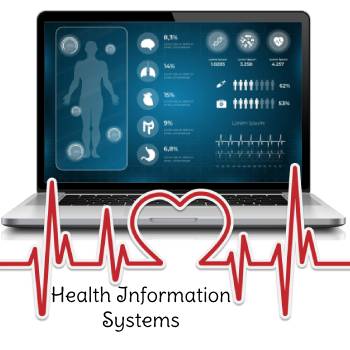Strengthening Health Systems – Key Strategies and Innovations
Health systems are thus the core of the ability to provide quality services to a population in a country. A well-structured health system contributes highly towards attaining better health outcomes and reducing inequity in health. It also brings out the attainment of sustainable development goals. Health system strengthening includes all the components that need reinforcement: governance, financing, health workforce, information systems, and service delivery.

Components of a Healthcare System
A health system is defined as “all organizations, institutions, resources, and persons whose primary intent is to improve health”. According to the World Health Organization, a health system is considered to have six identified building blocks or core components. These are:
Service Delivery
Service delivery is the last point that all health systems try to achieve, and it entails access and quality for all citizens comprehensive care. Effective service delivery demands a well-equipped health facility and well-trained health workforce to have available essential medicines and commodities via a reliable supply chain.
Government Policies – Social Programs
Successive Indian governments have implemented a range of policies aimed at alleviating poverty and raising living standards. Programs such as MGNREGA, which guarantee at least a hundred days of wage employment to rural households, have ensured that the poorest of the poor have coping mechanisms in their hands. Likewise, programs such as the PDS system and subsidized food have helped feed millions.
However, such programs have not been devoid of various challenges. Commonly cited reasons that limit their efficacy include corruption, bureaucratic inefficiency, and unequal access. Besides, while such programs have eliminated poverty concerns immediately, they do not always successfully eliminate deep-seated structural issues contributing to the creation of long-term poverty.
Health Workforce
A quality health service requires competent and motivated health workers. The strengthening of the health workforce in this regard must include training, recruitment, and retention of the workforce, and its distribution according to the requirement in every region.
For any health workforce to be strong and resilient, the problem of burnout needs to be resolved, especially in countries with low and middle incomes where the pay is not good and where there are no career development opportunities.
Health Information Systems
Therefore, strong health information systems play a vital role in making informed decisions, formulating policies, and managing the health system. HIS encompasses data collection, analysis, and dissemination processes that enable a superior view of health trends, disease outbreaks, and performance assessments as regards healthcare delivery.
Access to Essential Medicine
Besides, access to essential medicines is another health system attribute that is important. It involves the assurance that medicines and health technologies are available, accessible, affordable, and quality-assured. Strengthening this health system component requires robust regulatory frameworks, efficient supply chain management, and innovative financing mechanisms that are aimed at reducing costs and easing access.
Health Financing
Health financing is at the core of developing a health system with resources in adequate supply to ensure quality care without financial hardship. This includes, among others, resource mobilization, pooling, and efficient use of money, along with financial protection mechanisms such as health insurance schemes, thereby reducing out-of-pocket expenditures.
Key Strategies for Strengthening Health Systems
In health system strengthening, comprehensive addressing of these identified challenges or leveraging of the opportunities needs to be done through the deployment of strategies for each component of the health system. Some of the key strategies for strengthening health systems include:
Next page: Enhanced Health Workforce Capacity
Investment in health workforce development must be the only backbone to which the resilience of the health system is pegged. This should be through expanding training programs, opportunities for continuous professional development, and retention strategies to reduce workforce shortage.
Promotion of task-shifting support for integration of community health workers, will help in realizing better service delivery levels, especially in hard-to-reach areas.

Improvement of Health Information Systems
Digital transformation is, therefore, the core of improved health information systems. It should include electronic health records, big data analytics, and interoperable systems that will advance data quality, access, and usability.
Ensure Equitable Access to Essential Medicines
Improvement in access to essential medicines requires strengthening supply chain management, strengthening regulatory frameworks, and increasing local production of pharmaceuticals.
Strengthen Health Financing Mechanisms
Improvement in health financing calls for innovative strategies aimed at resource mobilization as well as financial protection. Some key strategies to ensure adequate and sustainable financing of health services include increasing health insurance coverage, introducing performance-based financing, and increasing public health expenditure.
Innovations in Health Systems Strengthening
The core role to be played by innovation is the strengthening of health systems through new technologies, innovative models of care, and innovative service delivery approaches. Some examples of innovative approaches that have been tried with success include:
Telemedicine and Digital Health Solutions
Telemedicine and digital health solutions have transformed healthcare delivery; more importantly, they have opened up avenues of access to care for remote and underserved communities. Innovations provide an avenue for consultation with patients remotely, enhance patient monitoring, and increase specialist care access.
Alternative Health Financing Models
New models for innovative financing include social impact bonds, health impact funds, and blended finance mechanisms. These open new avenues for resource mobilization and improvement in health outcomes by drawing investment from the private sector, introducing accountability, and making health programs more sustainable.
Conclusion
This health system strengthening should hopefully contribute to attaining sustainable development and improvement in the general state of health internationally. Building on key components, applying successful strategies, and leveraging innovations will help develop resilient health systems in countries capable of responding to current and future health challenges.


